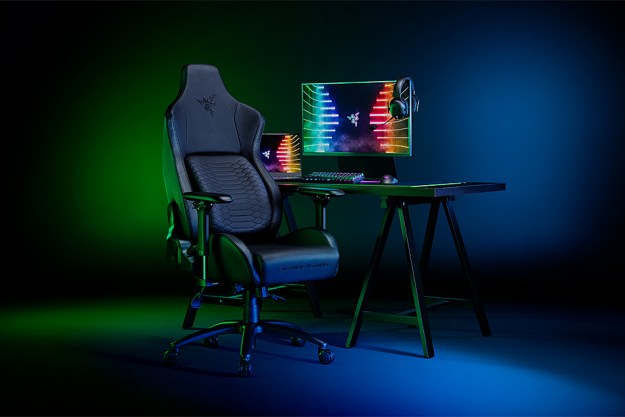
Google’s image ain’t what it used to be. Since last autumn, the Internet giant has taken a lot of criticism where it hurts: its search results. Many have claimed that Google’s results are clogged up with crappy, spammy websites trying to game the search engine. In January, Google denied these claims, but admitted that it has seen a “slight uptick” in search spam over the last few months.
Last Friday, the Mountain View company took its boldest step yet to address the persistent criticisms against it, issuing a massive search algorithm update intended to weed out “low-quality” websites (content farms) from its results and reward sites with original, high-quality content. On its blog, the company estimated that 11.8 percent of all search results would be significantly affected by the algorithm change. And true to its word, big changes in search were noticed over the weekend. A number of sites have virtually disappeared from Google’s results, while others have received a significant boost from the new changes. Unfortunately, the changes don’t appear to be entirely positive. Many legitimate sites have been wounded in Google’s latest attack on spam, including Digital Trends.
The update
Many, including us, have labeled Google’s latest search update an attack on “content farms,” or website networks that pump out boatloads of SEO (search engine optimized) content to artificially raise hit counts and ad revenue. The article quality on these sites is low. Articles aren’t being written for people, they’re being written to get the best placement on Google’s search pages. However, though Google has stated that it is attacking “low-quality” websites, representatives did not use the word “content farms” when describing the major update over the weekend.
“This update is designed to reduce rankings for low-quality sites—sites which are low-value add for users, copy content from other websites or sites that are just not very useful,” wrote Googlers Matt Cutts and Amit Singhal. “At the same time, it will provide better rankings for high-quality sites—sites with original content and information such as research, in-depth reports, thoughtful analysis and so on.”
Google hasn’t given any specifics on how it defines “high-quality” and “low-quality” sites. The paragraph above is as specific as the company will be, claiming that giving away more information could lead to more spammers gaming its results.
Strange things are happening
Predictably, this update has almost eliminated a number of “low-quality” sites from Google’s results. In a quick study of one million keywords, Sistrix found that a number of common content farms like WiseGeek, Suite101, Associated Content, Articles Base, and Examiner have seen 75 to 95 percent of their keywords removed. WiseGeek, for example, lost almost 77 percent of its visibility on Google’s search engine.
Yahoo’s Associated Content (a property it purchased) took a huge blow as well — perhaps losing as much as 93 percent of its Google search traffic. Speaking with Kara Swisher of AllThingsD, Yahoo’s Luke Beatty admitted that the company would probably take a hit from the update, but dismissed search as an outdated method of finding content. “…smaller, social means of distribution are clearly the way people are now finding our content…Search traffic is not our focus within Yahoo – it hasn’t been for 10 months.”
Still, while some content farms have been attacked, others don’t seem impacted at all. In its study, Sistrix noted that eHow actually saw a boost after the update. eHow’s parent company, Demand Media, has been labeled a content farm by many. SEO Clarity took a random sample of 60,000 keywords and also found that some content farms, including eHow, seem to have been given a boost by the algorithm change. According to the study, Answers.Yahoo.com, Wikipedia, eHow, Amazon, and a number of retail store sites saw a big boost from the change. Some shopping sites like ShopWiki, Shopping.com, and BizRate.com also saw steep declines in search ranking.
Caught in the shockwave?
Legitimate sites have seen traffic declines as well. The Guardian listed a number of regular websites that have been hit by the update including the British Medical Journal, PR Newswire, The Well, Cult of Mac, and, yes, Digital Trends (full list here). Cult of Mac’s Leander Kahney is upset (to say the least) about the changes.
“We’re a blog, so we aggregate news stories like everyone else,” wrote Kahney in a news post. “But our posts are 100-percent original and we do a ton of original reporting, as The Guardian noted this morning. Perhaps it was because we’re constantly ripped off by shitty clone blogs? Or maybe because we ranked so highly for popular keywords like ‘Apple’ and ‘iPhone.’ In fact, we used to get a lot of love from Google, placing highly on Google News and Google’s general search pages. A lot of our traffic came from Google, which is why the changes are so serious. I’m already seeing a big drop-off in traffic. Over the weekend and today, the traffic is half what it normally would be. I’m pissed because we’ve worked our asses off over the last two years to make this a successful site.”
The view from the homefront
We aren’t unaffected. Some shifts Digital Trends has seen in the way our own content is ranked seem to accomplish the exact opposite of what Google intended. Rather than prioritizing original “high quality” content, sites that scrape our original content and republish it now rank above us in Google. This wasn’t the case days ago.
For example, a search for “Netflix vs. Amazon Prime” turns up our article on it as the number one search result… but not on our site. It’s the version syndicated by an ABC affiliate in Boise, Idaho. Our original version shows up number 63, behind literally dozens of copies of the same article from news affiliates across the country. Other sites seem to suffer the same syndication syndrome. Search for the exact title of PCWorld’s article Facebook and iPad: Leading the Pack in Fake Internet Rumors and the version syndicated by Yahoo News shows up ahead of PCWorld’s original article.
Google intended to punish content scrapers and reward companies that publish original content, but doesn’t seem to be able to figure out who’s the original author and who’s the copying party.
Conclusion
Hopefully Google will clarify what its goals were with this update and fix some of the innocent casualties like Cult of Mac. We applaud Google for taking a risk and making big changes to its search algorithms in the name of better results, but it’s hard not to feel like the company tried to use an ax to fix a bullet wound. It achieved some broad positive changes, but sliced some innocents along the way.
Google, we like your attitude, but your work ain’t done.
UPDATE 3/2/2011: Google has fixed whatever error was causing Cult of Mac to lose 50 percent of its search traffic. Read the story here.


